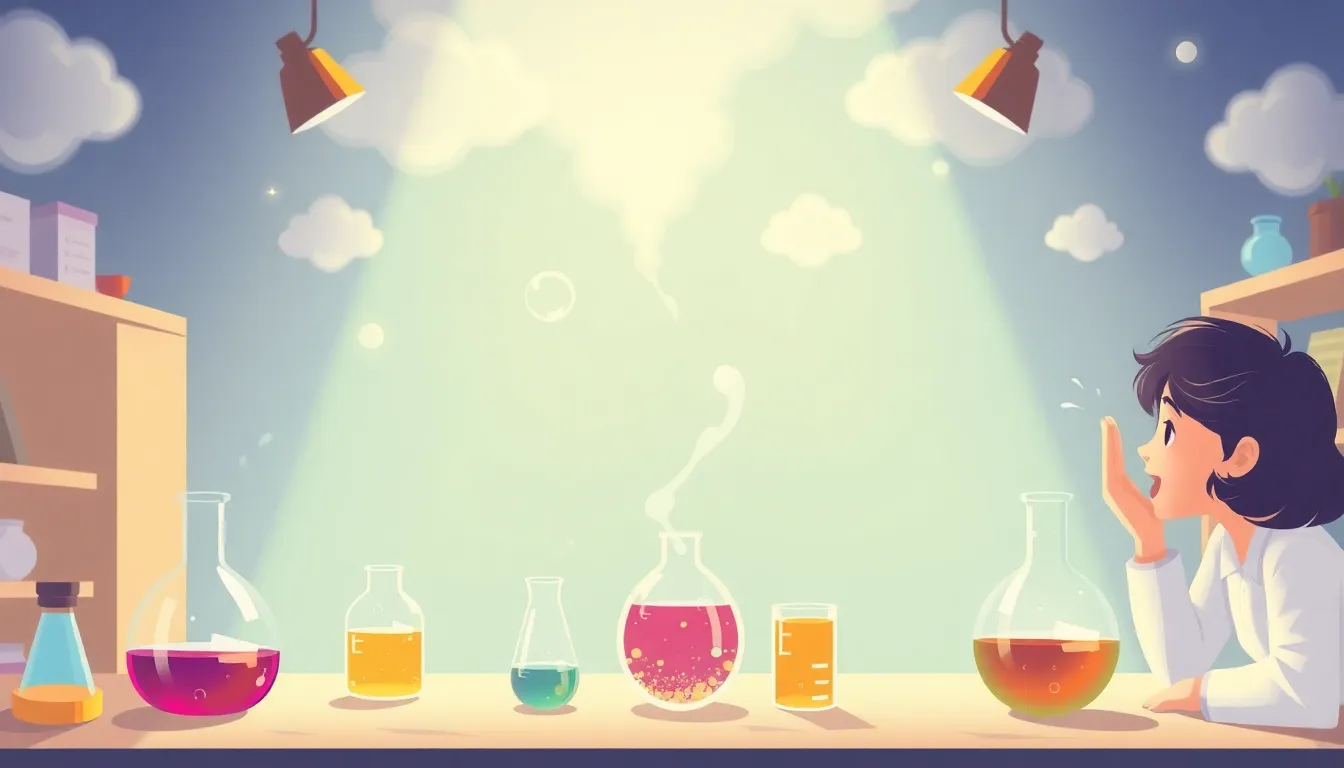
Atmospheric Chemistry
What Is the Atmosphere?
The atmosphere is the layer of gases that surrounds Earth. It is made mainly of nitrogen (about 78 %) and oxygen (about 21 %). The remaining 1 % includes gases like argon, carbon dioxide, neon, and tiny amounts of many others. These gases are invisible, but they protect us, keep the planet warm, and let us breathe.
How Chemistry Shapes the Sky
Gases and Reactions
When sunlight hits the atmosphere, it can change some gases. For example, ultraviolet (UV) light splits oxygen molecules (O₂) into single oxygen atoms. These atoms quickly join other O₂ molecules to form ozone (O₃). Ozone creates a protective “shield” that blocks most harmful UV radiation.
Pollution and Smog
Human activities release extra chemicals, such as nitrogen oxides (NOₓ) and volatile organic compounds (VOCs), into the air. In sunlight, NOₓ and VOCs react to make ozone near the ground, which we call smog. Smog can irritate eyes, make breathing difficult, and damage plants.
Acid Rain
Sulfur dioxide (SO₂) and nitrogen oxides also react with water vapor, forming acids like sulfuric acid (H₂SO₄) and nitric acid (HNO₃). When these acids fall as rain, they can harm lakes, forests, and buildings.
Why It Matters
Understanding atmospheric chemistry helps us protect the environment. By reducing emissions from cars, factories, and power plants, we can lower the amount of harmful gases that create smog and acid rain. Cleaner air means healthier people, animals, and ecosystems.
Scientists monitor the atmosphere with satellites, balloons, and ground stations. They measure gas concentrations, temperature, and wind patterns. This data lets them predict weather, track climate change, and warn about dangerous air quality.
What You Can Do
- Walk, bike, or use public transport instead of driving alone.
- Save energy at home by turning off lights and using efficient appliances.
- Plant trees; they absorb carbon dioxide and release oxygen.
- Support policies that limit pollution and promote renewable energy.
Every small action adds up. By learning how gases interact in the sky, we become better stewards of the planet and help keep the air clean for future generations.